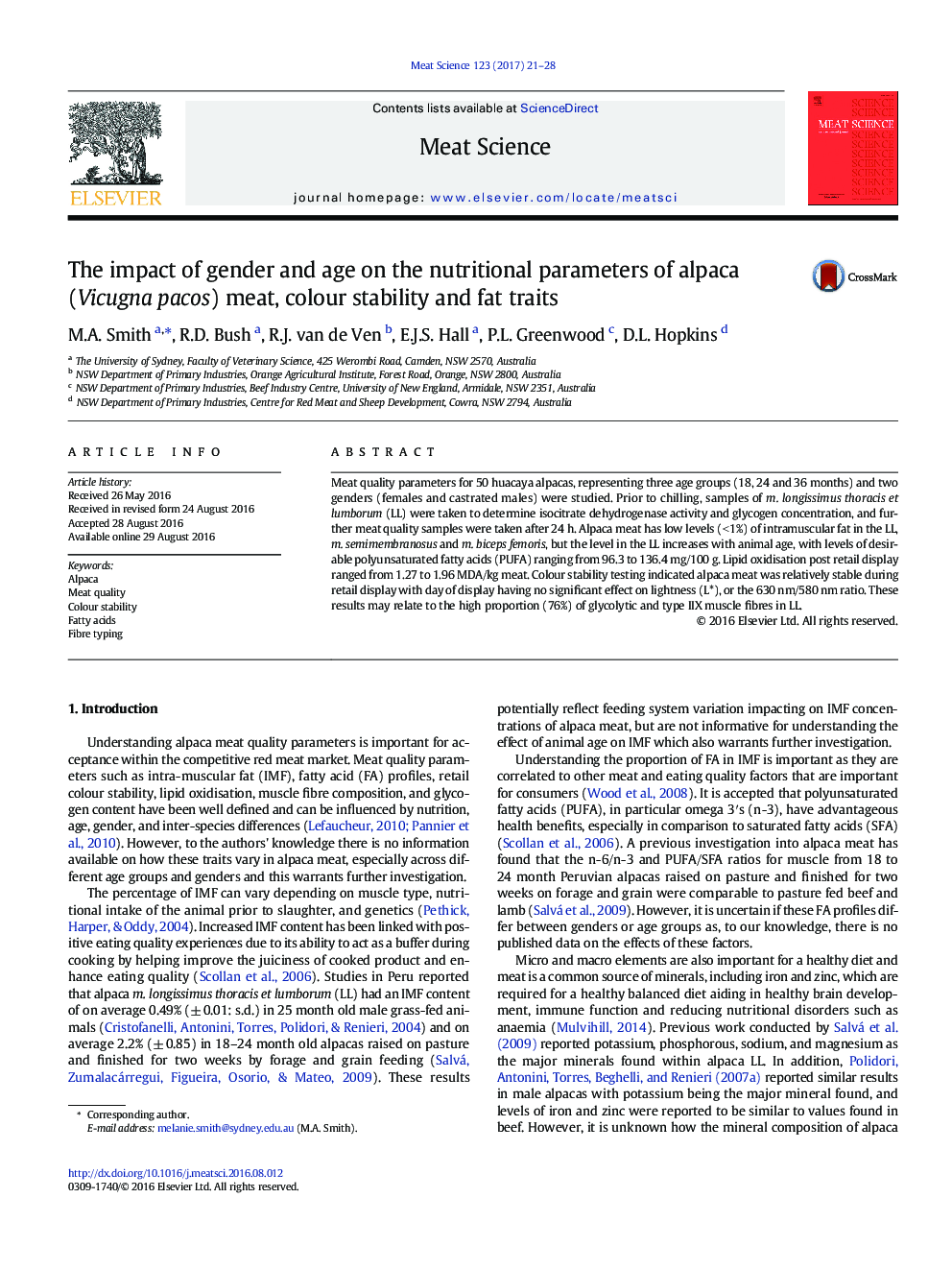| Article ID | Journal | Published Year | Pages | File Type |
|---|---|---|---|---|
| 2449286 | Meat Science | 2017 | 8 Pages |
•Alpaca meat has favourable colour stability parameters with minimal browning during retail display.•The effect of electrical stimulation on product during retail display varied between muscles.•Alpaca m. longissimus thoracis et lumborum is a glycolytic muscle composed of 76% type IIX fibres.•Alpaca meat is a nutritious dietary meat source.
Meat quality parameters for 50 huacaya alpacas, representing three age groups (18, 24 and 36 months) and two genders (females and castrated males) were studied. Prior to chilling, samples of m. longissimus thoracis et lumborum (LL) were taken to determine isocitrate dehydrogenase activity and glycogen concentration, and further meat quality samples were taken after 24 h. Alpaca meat has low levels (< 1%) of intramuscular fat in the LL, m. semimembranosus and m. biceps femoris, but the level in the LL increases with animal age, with levels of desirable polyunsaturated fatty acids (PUFA) ranging from 96.3 to 136.4 mg/100 g. Lipid oxidisation post retail display ranged from 1.27 to 1.96 MDA/kg meat. Colour stability testing indicated alpaca meat was relatively stable during retail display with day of display having no significant effect on lightness (L*), or the 630 nm/580 nm ratio. These results may relate to the high proportion (76%) of glycolytic and type IIX muscle fibres in LL.
